Do you have a question about the Hitachi RAF-25RXB and is the answer not in the manual?
Essential safety guidelines to follow before and during the installation process.
Safety measures for moving the unit or performing maintenance to avoid injury.
Important safety warnings and advice for operating the air conditioner correctly.
Identification and explanation of the various parts of the indoor unit.
Details regarding the specific model names and their physical dimensions.
Information on connecting and operating multiple indoor units with one outdoor unit.
Details on permissible and non-permissible combinations of operation modes for multiple units.
Guidance on reducing the number of operated indoor units for efficiency.
Explanation of sounds or warmth from stopped indoor units during multi-system operation.
Instructions for operating the unit using the temporary switch when the remote is unavailable.
Explanation of the meaning of various indicator lamps on the indoor unit.
Step-by-step guide on how to open and close the front panel of the indoor unit.
How to adjust the upward and downward direction of the conditioned air.
Information on special modes for extended airflow in heating and cooling.
Instructions for adjusting the left and right direction of the conditioned air.
Guidance on using the circuit breaker when the air conditioner is not in use.
Advice for economical and effective use of the air conditioner.
Detailed steps for cleaning the air filters to maintain performance and efficiency.
Instructions for safely removing and reinstalling the front panel.
Methods for cleaning the front panel without causing damage.
Steps to prepare the unit for extended periods of non-use to prevent mold.
Details about the air purifying filter, its usage, and maintenance.
Information on how the unit's heating system works and its performance factors.
Explanation of the unit's cooling and dehumidifying functions and limitations.
Periodic safety inspections for the unit's earth line and mounting frame.
Checks to perform when the remote controller or unit is not operating correctly.
Explanation of sounds and indicators that do not signify a unit failure.
Additional explanations of sounds or conditions that are not unit failures.
Steps to take if the unit fails to operate normally after checks, and information to provide.
Notes on quiet operation, odors, and methods to reduce them via cleaning.
Essential safety guidelines to follow before and during the installation process.
Safety measures for moving the unit or performing maintenance to avoid injury.
Important safety warnings and advice for operating the air conditioner correctly.
Identification and explanation of the various parts of the indoor unit.
Details regarding the specific model names and their physical dimensions.
Information on connecting and operating multiple indoor units with one outdoor unit.
Details on permissible and non-permissible combinations of operation modes for multiple units.
Guidance on reducing the number of operated indoor units for efficiency.
Explanation of sounds or warmth from stopped indoor units during multi-system operation.
Instructions for operating the unit using the temporary switch when the remote is unavailable.
Explanation of the meaning of various indicator lamps on the indoor unit.
Step-by-step guide on how to open and close the front panel of the indoor unit.
How to adjust the upward and downward direction of the conditioned air.
Information on special modes for extended airflow in heating and cooling.
Instructions for adjusting the left and right direction of the conditioned air.
Guidance on using the circuit breaker when the air conditioner is not in use.
Advice for economical and effective use of the air conditioner.
Detailed steps for cleaning the air filters to maintain performance and efficiency.
Instructions for safely removing and reinstalling the front panel.
Methods for cleaning the front panel without causing damage.
Steps to prepare the unit for extended periods of non-use to prevent mold.
Details about the air purifying filter, its usage, and maintenance.
Information on how the unit's heating system works and its performance factors.
Explanation of the unit's cooling and dehumidifying functions and limitations.
Periodic safety inspections for the unit's earth line and mounting frame.
Checks to perform when the remote controller or unit is not operating correctly.
Explanation of sounds and indicators that do not signify a unit failure.
Additional explanations of sounds or conditions that are not unit failures.
Steps to take if the unit fails to operate normally after checks, and information to provide.
Notes on quiet operation, odors, and methods to reduce them via cleaning.
| Type | Split System |
|---|---|
| Cooling Capacity | 2.5 kW |
| Heating Capacity | 3.2 kW |
| Refrigerant | R410A |
| Power Supply | 220-240V, 50Hz |
| Indoor Unit Weight | 9 kg |
| Outdoor Unit Dimensions (W x H x D) | 780 x 540 x 260 mm |
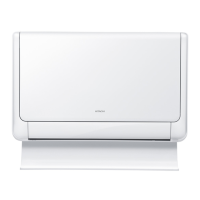
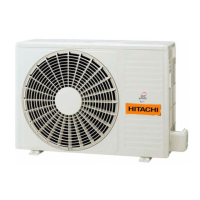
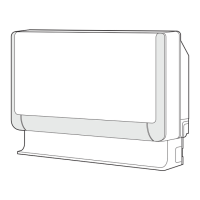
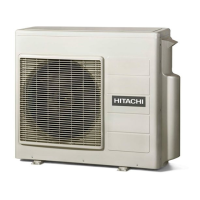

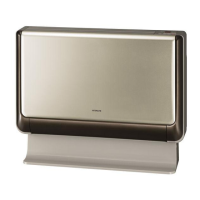
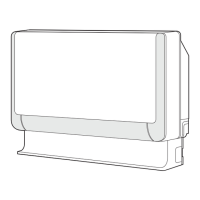

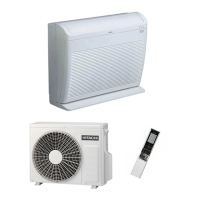


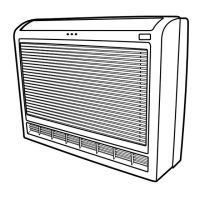
